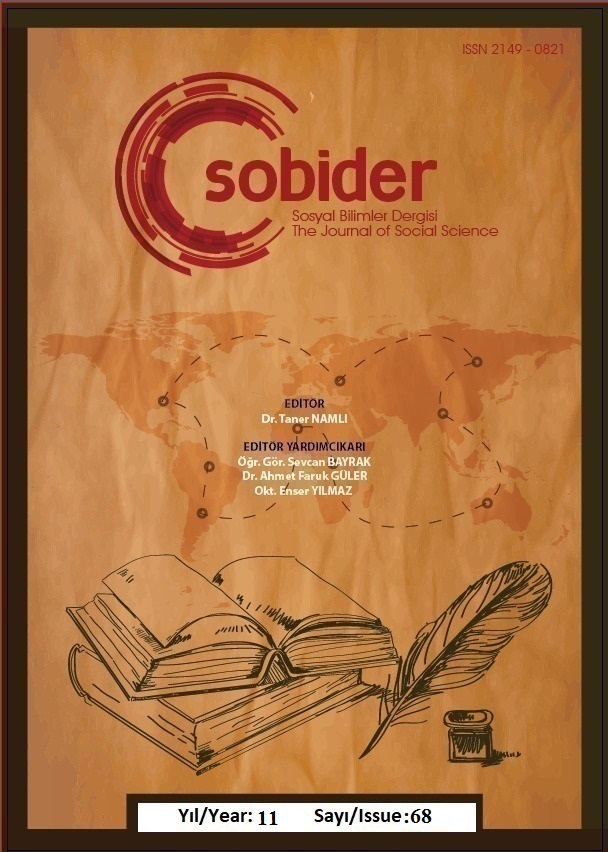Author :
Abstract
Bu araştırmada görsel sanatlar eğitiminin suça eğilimli bireyler üzerine etki boyutunun incelenmesi amaçlanmıştır. Araştırma, hem nicel hem de nitel araştırma yöntemlerinin bir arada kullanıldığı karma desenden yararlanılarak yürütülmüştür. Yöntemin etkililiğinin incelenebilmesi amacıyla çalışma grubunu Kayseri Denetimli Serbestlik Müdürlüğündeki 8 (sekiz) yükümlü birey oluşturmuştur. Araştırmacı 1 (bir) ay boyunca alınan izinler dahilinde belirlenen bir derslikte yükümlü bireylere görsel sanatlar dersi vermiştir. Veri toplama aracı olarak araştırmacı tarafından geliştirilen kişisel bilgi formu, ilgi ve tutum ölçekleri kullanılarak nicel araştırma yöntemlerinden tek gruplu ön test- son test seçkisiz deneysel desen uygulanmıştır. Yükümlülerin yapmış oldukları resimlerden elde edilen veriler ise araştırmacı tarafından oluşturulan puanlama kriterine bağlı kalınarak doküman analizi yöntemi ile yorumlanmıştır. Verilerin analizi sürecinde suça eğilimli bireylerin görsel sanatlar eğitimi almadan önce ve aldıktan sonra ilgi ve tutumları ile yapmış oldukları resimlerin karşılaştırılması yapılmıştır. Araştırma sonunda, görsel sanatlar eğitiminin suça eğilimli bireylere olumlu boyutta katkı sağladığının tespitine ulaşılmıştır.
Keywords
Abstract
In this research, classifying visual arts education according to crime prolongs the emergence of the impact on individuals. The research was conducted using a commercial design that combines both quantitative and qualitative research methods. In order to examine the effectiveness of the method, 8 (eight) obligations of the study in Kayseri Probation Directorate were created. The researcher allocates visual arts lessons to the obliged individuals in a lesson recorded within the scope of the permissions received for 1 (one) month. The current design exists without the single-group pretest-posttest being selected from quantitative research methods, using personal information formula, interest and attitude scales by the researcher as data collection tools. The data obtained from the drawings made by the obliged parties were interpreted by the researchers using the document analysis method, adhering to the standard criteria. During the analysis of the data, the crime was made against the images made with the interests and attitudes before and after receiving training in visual arts. At the end of the research, the contributions of the individual positive dimensions of visual arts education classified according to crime were determined.





